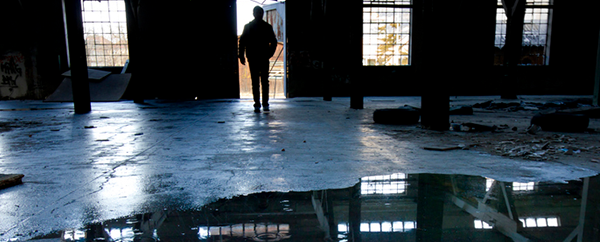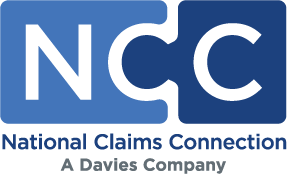
As a commercial property owner or manager, your insurance client assumes responsibility for maintaining their building and surrounding property. Whether they own or manage retail, office or industrial buildings or apartment complexes, failing to adequately maintain the infrastructure could lead to major property and liability losses. Producers, share these tips from Zurich to mitigate their commercial property risks.
Potential water intrusion risks to commercial buildings
Damaged roof. If the building’s roof is unable to keep out rain or support a heavy load of snow, the resulting water damage could cost a fortune and force tenants to move to a new location.
Consider this costly scenario, says Zurich: Rainwater enters an 11-story building through a broken roof drainpipe and unprotected window openings. The water runs throughout the building via elevator shafts, causing $200,000 in damage.
Related: Disaster emergency plans: How vulnerable is your business?
Broken plumbing. Heavy rain and snow aren’t the only commercial property risks for water damage in a building. In fact, most water damage claims are “inside jobs” — burst or leaky sprinkler systems or plumbing that destroys walls and floors from the top floor down. Particularly if the building is an older one, plumbing and sprinkler systems should be checked on a regular basis.
Consider these costly scenarios:
- An improperly installed soap dispenser falls onto a lever-style faucet, causing water to run over the weekend, flooding three floors below and resulting in $350,000 in damage.
- Workers carrying a large ladder inadvertently knock off sprinkler heads that were already hooked up. A shut-off isn’t available, causing thousands of dollars of damage.
Winter freezes. One of the most common and costliest hazards is when a building’s plumbing and other water-filled systems freeze. Ice formation can develop into significant obstructions that can leave the systems impaired. The result could be a loss of water pressure or flow and incapacitated fire protection systems. And because water expands when it freezes, cold weather can sometimes cause pipes, valves and fittings to break and create significant water damage that may not be immediately detected.
Advise your clients to create effective tactics to keep away sources of moisture. These may include groundwater, water table, floodwater, seepage, storm water, utilities, sewers, snow/ice melt and runoff or discharge from adjacent properties.
Your clients need a moisture-control plan that takes into consideration their logistics and storm water control. Plans should focus on addressing a building’s exterior envelope detail, particularly during the construction phase and throughout the working life of the building. Having a plan in place for proactive moisture control helps reduce the risks of water intrusion into the building and aids in controlling moisture inside the building and in surrounding areas.
Beyond damage to the building, the safety of occupants and the integrity of expensive business equipment and technology could be at risk, should a breach in the building envelope or faulty interior plumbing cause a rapid incursion of water.
Potential commercial property risks involving faulty wiring
A building’s electrical wiring can be pose a risk if it’s not properly maintained. Electrical fires remain one of the most common causes of building fires.
Good risk management preparation is vital not only to prevent fires, but also to control and limit the damages that might occur. A key tool in this process is a pre-written fire plan. It should assume a blaze is underway and outline steps to take to protect people and property.
The pre-fire plan begins with a thorough outline of the building’s construction, occupancy and floor plan. This knowledge helps firefighters and other emergency response personnel execute a rapid response and a more positive outcome.
A pre-fire plan should include:
- The layout of the building and surrounding property, including parking lot entrances, building entrances, building key box location, hydrant locations and nearby structures
- A complete floor plan of each level of the building, including locations of hazardous materials and processes, flammable materials, heating and air conditioning equipment, smoke detectors, utility shutoffs and elevators
- Pertinent structural features such as building size, height, construction and fire-rated walls
- Description of occupancies
- Site features such as occupants with special rescue needs, unoccupied floors, daytime and nighttime occupancy loads
- Alarm system and related fire-safety information
- Hydrant information
- Building fire protection systems
Fire response plans should be written in easy-to-understand language to be as effective as possible. The plan should be provided to fire officials and updated on a regular basis.
Related: Update your natural disaster emergency response plan
Potential risks resulting in slips, trips and falls
Slips, trips and falls can present challenges to owners of all types of commercial properties, from retail, restaurants and hotels, to hospitals and office buildings. Simply fixing the inevitable sidewalk cracks can help prevent a costly lawsuit from building visitors or passersby who trip and injure themselves.
Property owners cannot ignore the escalating costs of slip, trip and fall incidents and their impact to the bottom line. To prevent these incidents, owners must understand the causes, continually identify areas where improvements can be made and implement action plans.
Zurich has identified key risk factors that commonly result in slip, trip and fall claims:
- Surface composition and lack of slip-resistance surfaces
- Foreign substances on a walking surface
- Other surface conditions
- Surface or level changes
- Obstructions
- Visibility
- Stairs
- Unusual features
- Human factors
If a slip, trip or fall incident occurs, property owners should respond quickly. Ensure that onsite managers know their roles and what to say. They should follow up with the injured person after the incident, determining the cause of the event to prevent similar occurrences.
While not a complete list, these are the most common commercial property risks your commercial client may face. Share these tips with them, to help them keep risks and losses low.
This article originally appeared on Zurich’s website. It has been modified and posted with Zurich’s permission.

